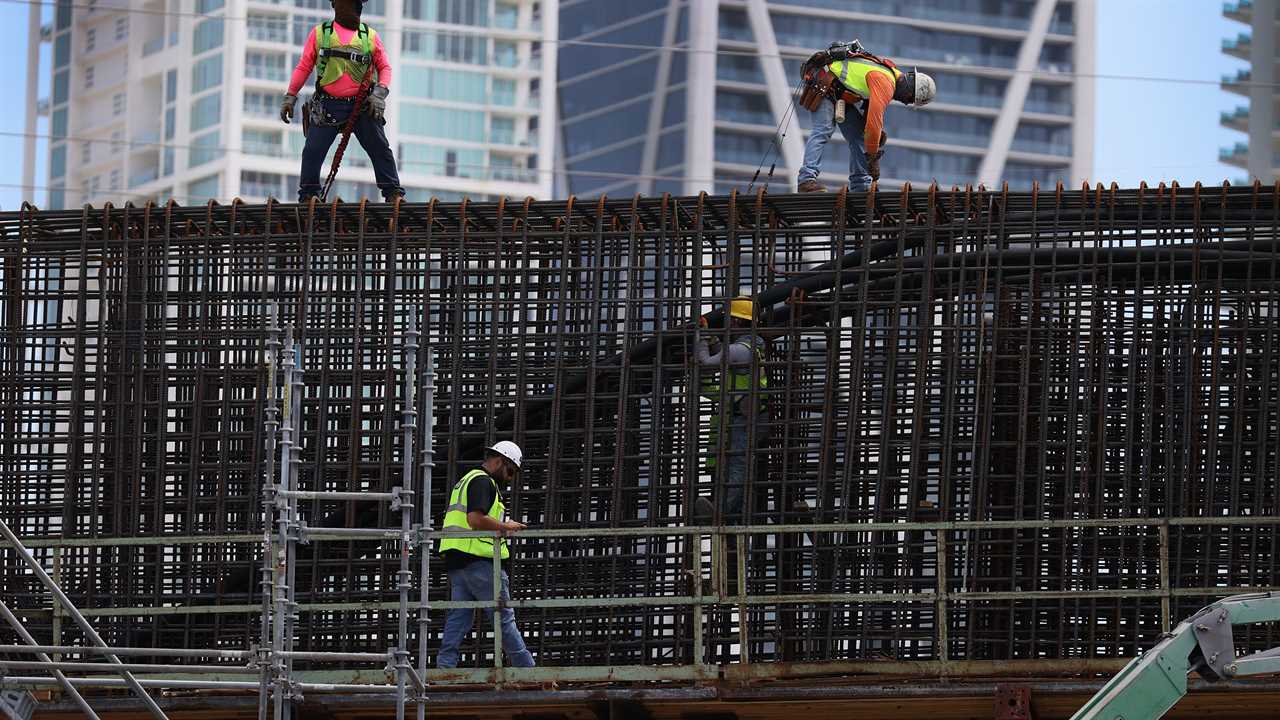
Speaking outside Pittsburgh today, President Biden outlined a $2 trillion plan to invest in the country’s infrastructure, creating millions of jobs in the process.
“It’s time to build our economy from the bottom up and the middle out, not the top down,” he declared, calling the plan “a once-in-a-generation investment in America, unlike anything we’ve seen or done since we built the interstate highway system and the space race decades ago.”
Public investment in infrastructure, as a share of gross domestic product, has been in decline for the past half-century, and it has recently become a topic of growing concern across party lines. President Donald Trump proposed his own $1.5 trillion infrastructure plan in 2018, though it was not as far-reaching as Biden’s plan, and it never became law.
So how did we get to a place where major infrastructure improvements are so clearly necessary — and what are the biggest needs?
The American Society of Civil Engineers has been releasing an Infrastructure Report Card every four years for over two decades, and the evaluations have never been very positive.
This month the group published its latest report, giving the United States’ infrastructure a C- over all. That’s a shabby grade, but it reflects a modest amount of recent improvement: It is the first time that the overall score has been higher than a D+.
“We’ve made a little bit of incremental progress,” Emily Feenstra, the engineering society’s managing director for government relations and infrastructure initiatives, said in an interview today, adding that these improvements had been made largely at the state and local levels.
“What you’ve seen is treading water, almost nibbling away at the margins, when it comes to our nation’s infrastructure,” Feenstra said. “Cities and states are doing what they can to invest, funding new technologies, but there hasn’t been that kind of transformational investment that would really give us the bump up to put us on good economic footing.”
The report card analyzes the nation’s infrastructure in 17 categories, including roads, schools, transit and drinking water. Bridges were the only category in which the grade had declined from four years ago, now sitting at a C. Eleven categories have a grade in the D range, reflecting the extent to which bridges and other transportation infrastructure have moldered in recent decades.
The coronavirus pandemic has heightened the need for federal assistance in a number of ways, including on the transit front, as a drop in ridership has sent revenues plummeting — putting more strain on already hard-up transportation systems at both the local and national levels.
But most of the nation’s infrastructure needs are longstanding, and many have to do with climate change. Storm-water infrastructure, for instance, was the one new category on the report card this year.
The extreme weather that compromised the power grid in Texas last month served as a stark reminder of the ways in which climate change can threaten systems that lacked strong public investment. And it highlighted the ways in which infrastructure systems are intertwined.
Biden’s infrastructure proposal defines its purpose broadly, something that has pleased analysts at the engineering society. “It’s nice to see the comprehensive approach,” Feenstra said. “Not just roads, bridges, transit — which are important — but also water, schools, things that can alleviate storms’ impact. That really is key, because as much as we silo things into these 17 categories, we do emphasize that infrastructure is all interlinked, and events like Texas put that at the forefront.”
Biden’s proposal offers a framework, but he will have to work with Congress to write the legislation. Last year the Democratically controlled House trotted out a $1.5 trillion infrastructure bill, the Moving Forward Act, elements of which could wind up in a final bill. It included hundreds of billions of dollars for repairing roads and bridges, funding other transit projects, making improvements to school buildings, constructing affordable housing and enhancing broadband access.
Parts of other bills floating around the House could also wind up in the final package, including the CLEAN Future Act, which would lay out a plan to eliminate fossil fuels from the United States’ electricity supply by 2035, and the Intercity Passenger Rail Trust Fund Act, which seeks to stabilize Amtrak’s funding by creating a trust fund.
Although both Democratic and Republican leaders have expressed support for a major infrastructure project, it’s not yet clear that Biden’s push will get any backing from Republicans.
The president has said that he will pay for it by raising taxes on corporations and on Americans making more than $400,000 a year, a proposal that Republicans are unlikely to get behind. One big advantage for Biden: Senator Joe Manchin of West Virginia, the most conservative Democrat in the chamber, has said that he supports making large-scale investments in infrastructure.
But there’s also one big possible hangup: Manchin, more than almost any other influential Democrat, has a strong desire for bipartisan compromise and could balk at a proposal that fails to garner any Republican support.
“I’m going to bring Republicans into the Oval Office, listen to them and what they have to say, and be open to other ideas,” Biden said today. “We’ll have a good-faith negotiation with any Republican who wants to help get this done — but we have to get it done.”






